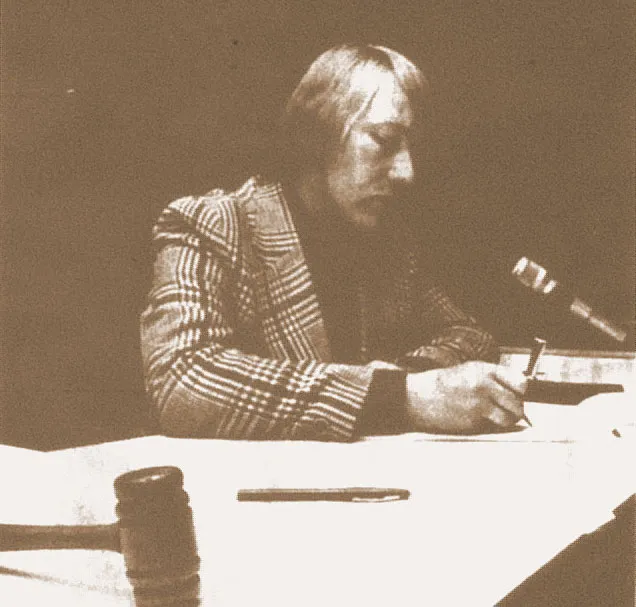Truth: Stranger than fiction
Reflections on 51 years in journalism


Editor’s note: This is the first in a five-part series of columns detailing notable news stories from the past 51 years, leading up to the author’s retirement.
Working as a journalist offers one primary motivation: The opportunity to find and tell the truth, especially when others don’t want it told. Sometimes, that truth is stranger than fiction — which by itself offers a catnip that helped to propel a career that included tens of thousands of stories. This one, however, which occurred early in my career, stands as the movie poster to the genre.
It was 1975. I was a full-time student at Southwest State University in Marshall, Minnesota (Southwest Minnesota State University now). I also was working full-time as a reporter for the local community daily, the Independent.
I had been on campus, studying. The city desk finally found me and told me that the FBI had arrived on campus and freed a young woman who had been kidnapped. I was to go after the story.
SPONSORED CONTENT
As the story unfolded, and I didn’t write all of it, a college law professor, Thomas Lippert, and a student, Ross Tenneson, had traveled to Purdue University in West Lafayette, Indiana, where they forced a female student into their car, forced her to drink Wild Turkey whiskey until she passed out, then drove her back to Minnesota.
They took her to the basement of Lippert’s parents home in New Ulm, Minnesota. With his parents upstairs, they proceeded to attempt to brainwash her into thinking that she loved Lippert. They placed her in a black, wooden box fitted with electrical connections. They showed her pictures of men and shocked her. Then they showed her pictures of Lippert, and didn’t.
At some point, they moved her to the Marshall campus. She was seen on campus by herself, not always in Lippert’s company. She and Lippert lived in the same apartment complex as me, although I don’t have any memory of seeing her there.
Lippert hired famed defense attorney F. Lee Bailey after his arrest. Bailey, those with long memories will recall, handled many high-profile cases around the country in the 1970s and beyond, the last significant one being on the defense team for O.J. Simpson.
At the time of this story, however, Bailey also was representing Patty Hearst, the granddaughter of newspaper publisher William Randolph Hearst. Hearst herself had been kidnapped by the United Federated Forces of the Symbionese Liberation Army, a fanatical, far-left terrorist organization known for robbing banks, among other crimes. Hearst came to identify with her kidnappers and was photographed as a participant in one of the bank robberies.
Bank robbery and kidnapping are both federal crimes, and with Bailey on board, the Lippert case and the Hearst case became intertwined.
In Hearst’s trial, which began in January 1976, Bailey used the then novel Stockholm Syndrome to defend his client. The syndrome was first coined in 1973 after a Swedish bank robbery in which some of the hostages came to identify with their captors. It is a somewhat rare psychological condition but has popped up in criminal cases. Hearst was convicted but later pardoned by President Bill Clinton.
The shoe was on the other foot with Lippert. Federal prosecutors attempted to use the Stockholm Syndrome to explain why Lippert’s victim was seen wandering free around campus.
With the cases conflicting, and with prosecutors more interested in convicting Hearst than Lippert, they plea bargained an outcome to Lippert.
Before sentencing, Lippert married a disabled woman he had met at the college — Southwest State was one of a couple of colleges in the nation at the time that was largely accessible to disabled students and thus attracted numerous students, many of them Vietnam vets, who could benefit from that. He pleaded with the judge to release him so he could take care of his wife.
Lippert was sentenced to six years but was released after two. Tenneson received four years probation.
I was not able to cover the trial, but I did a couple of years later travel to Fort Wayne, where the federal courthouse is located, and read the case file.
I lost track of Lippert at that point. I knew he had been admitted to a mental health facility but little more.
Along came the internet, and I began a search for him. It didn’t take long. I found a short obituary in the Salt Lake Tribune indicating that he had died of alcohol-related conditions in July 1999 at age 49.
End of story, I thought.
But it wasn’t.
Early in the morning of Jan. 10, 2014, as I was preparing breakfast while listening to the news, CBS reported about a Texas woman who had been exploring her genealogy and had completed a DNA test. She was shocked to learn that she had none of her father’s DNA.
Upon questioning her parents, she discovered that they had had trouble conceiving and had sought help from Reproductive Medical Technologies Inc. — a fertility clinic. In Salt Lake City.
There, a technician named Thomas Lippert had worked from 1988 until the mid-’90s, although he had donated sperm to the clinic a few years earlier than that.
As it turned out, he had been substituting his sperm for that of fathers passing through the clinic, and also sharing his sperm with a fertility clinic in Minnesota.
An investigation determined that he had fathered hundreds of children in Utah and Minnesota — so many that the Utah clinic shut down and attempted to alert patients that the likelihood was great that they could encounter half siblings in their romantic encounters.
End of the story? I guess we’ll see.
Read other columns from this series.
Collaborative journalism: A joint effort to protect a community
Amundson: Not always what it seems
Amundson: Stories some don’t want told
Amundson: Local events take a toll
Amundson: Career focused on community journalism
Amundson to retire from BizWest after 51 years in journalism

Editor’s note: This is the first in a five-part series of columns detailing notable news stories from the past 51 years, leading up to the author’s retirement.
Working as a journalist offers one primary motivation: The opportunity to find and tell the truth, especially when others don’t want it told. Sometimes, that truth is stranger than fiction — which by itself offers a catnip that helped to propel a career that included tens of thousands of stories. This one, however, which occurred early in my career, stands as the movie poster to the genre.
It…




